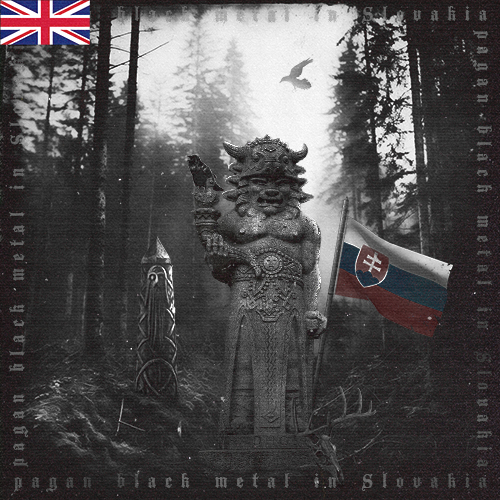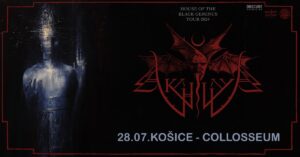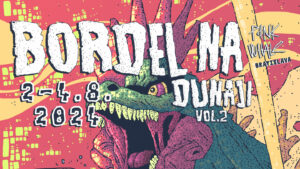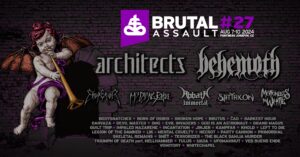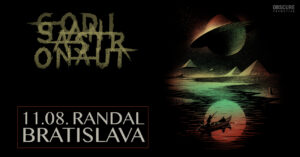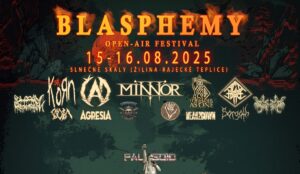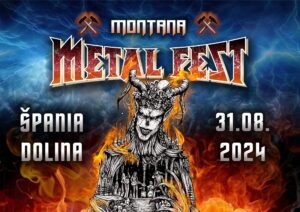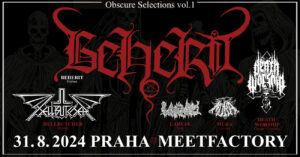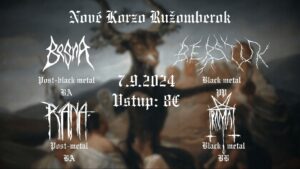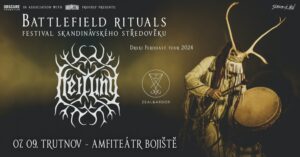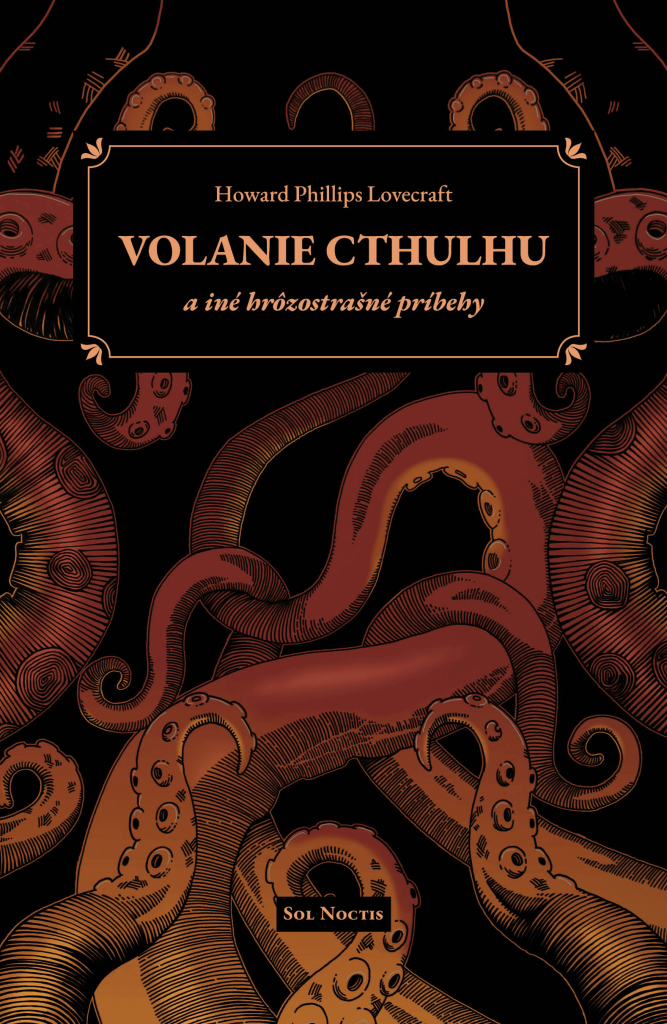In the sign of thunder
Slovakia is not a big country and despite the fact that we never had a scene like they have, for example, in Ukraine or Poland, I think it is meaningful to create an article which will serve as a reminder of the most important local bands and albums that will forever be associated with the genre of pagan black metal.
You might be wondering why I want to dig into the past. Apart from analyzing it, it will also be about remembering the people who brought the ideas of the ancient times back into modern life: mystical worlds of old deities, rituals, cult places, folklore, but also rebellion against established religion. This is pagan black metal in Slovakia, or in other words, an article about those who followed one of the many waves of this genre with all its positives and negatives.
Without chronological order I would like to focus on all of the albums that were the most popular in the local scene and resonate among the fans to this day. I won’t list everything, as it would be counterproductive to discuss projects or bands of insufficient quality. It should be noted that the aim of this article is not to promote any ideology but to analyze and reminisce about recordings which have also shaped the editorial team members of this webzine.
Immortal Hammer – V znamení Perúnovho kruhu (In the sign of Perun’s circle)
In terms of history, Immortal Hammer represent one of the first Slovak black metal bands that started to deal thematically with paganism. Even today, their debut album, V znamení Perúnovho kruhu (2002) has a pretty decent following. Except for a few production details, mainly related to the drum machine, I wouldn’t change anything.
Immortal Hammer appeared on the scene in year 2000 and together with Algor and Ancestral Volkhves they are considered to be one of the pioneers that dedicated their work to increasingly-popular pagan black metal. At the turn of the millennium, this genre had already been developing for several years in the metal scenes of our northern and eastern neighbors. After the initial demo recordings Tjarnaglofi (2001), Ohňom vojny spálená zem (2002) and Ochrancovia temnej krajiny lesnej (2002), the duo Lord Hades and Lord Beelphegor committed themselves to releasing a debut album in 2002. In an interview with our webzine, Lord Hades recalls the band’s beginnings as follows:
„In 1999 – 2000 I joined a band which didn’t have a firmly defined style or a name. After some of the members had left, four remained and that’s how Immortal Hammer was formed. The demos were created with three members because the drummer had left us. So, we tried to play the drums, which wasn’t an optimal solution, and that was the moment when the idea of using a drum machine was born. Looking back, I would say that I like the demos.“
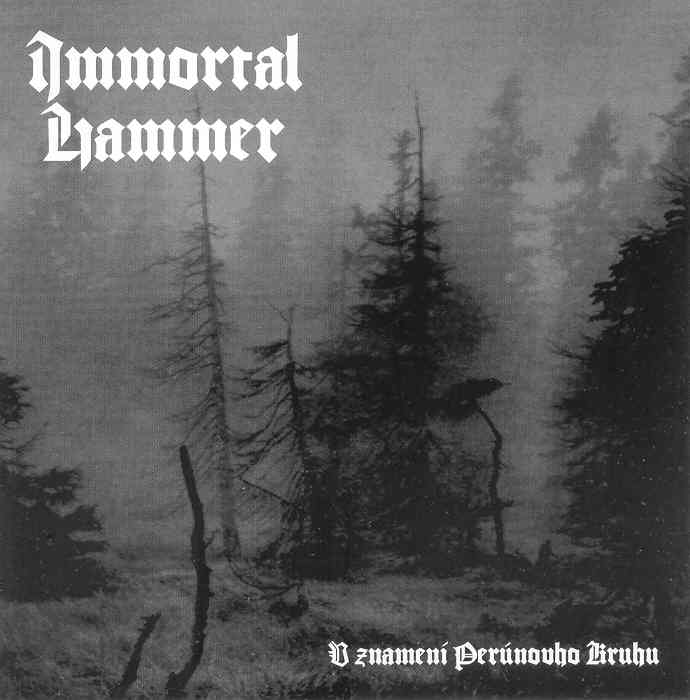
The album was released by the Czech label Eclipse Productions which later changed its name to Long Ago. In the first years of the new millennium it was one of the bigger local labels and it promoted bands such as Inferno, Tundra, Trollech, Slovak Algor, Polish Arkona and Ukrainian Astrofaes. This label also released the follow-up: an EP called Volanie bohyne smrti (2003) on a 7-inch record. This was something rather unconventional for that time and if I’m not mistaken it was the first Slovak black metal vinyl ever released.
„We have known the people from Eclipse Productions for a long time from various concerts that took place mainly in the Czech Republic but also in Slovakia. We knew from the beginning that Eclipse would be our label. After we recorded our debut there was a plan to record a mini-album called Ohňom vojny spálená zem, but Eclipse didn’t release it in the end. However, we recorded two more songs in a short period of time which were released on a 7-inch record. Two tracks from the mini album were released on a compilation with bands like Inferno, Besatt, Negură Bunget, etc.“
V znamení Perúnovho kruhu opens up with a marching intro with the same title as the album. The sound is a bit artificial and the tempo is almost inhumanly fast in some of the blast beats which slightly spoils the overall impression of the record. Nevertheless, one can encounter similar mistakes in other recordings from abroad, with bands like Arkona, early Kroda or Slavland. In hindsight, I have to admit that it was a sort of a hallmark of many pagan black metal bands of that time. Lord Hades commented on the album’s automatic drummer as follows:
„We just wanted to stand out and do aggressive pagan black metal. In my opinion less is sometimes more, and with a few exceptions, people felt pretty good about it.“
Here we get raw black metal with Beelphegor’s distinguished vocals and cold guitar riffs. The album cover itself faithfully captures the overall atmosphere. There are several anthemic tracks, especially the opening Inkvizítor, Im dunkelem Wald, Tisícročný duch vojny and V mene kultu. These pieces do not have a complex composition, they are built simplistically, but they work well. The album is around 48 minutes long. Clearly the local scene had not seen so much hatred, rawness and anger at the time of this release. After this album Immortal Hammer went into a twenty-year slumber. Let’s have Lord Hades say a few sentences in closing.
„There was a plan for another full-length album but over time relations in the band deteriorated. I won’t elaborate on these things, but the demise of the band had begun. Beelphegor was already toying with the idea of forming another band, but I never gave up on the idea of continuing with Immortal Hammer, although that needed some time.“
Algor – Úder pohanského hnevu (The strike of pagan wrath)
Algor burst into the scene in the late 90’s with a couple of demos, but what came in 2003 was something few expected. I am talking about the album called Úder pohanského hnevu which was released by Eclipse Productions. The duo behind this recording are Aldaron and Slavfist. The debut album had so much power that at the beginning of the millennium it literally took the breath away from many fans of the local scene and to this day it is still one of the best reviewed Slovak black metal albums. Algor continued successfully and after 10 years and several split albums another full-length called Hierofánia (2013) was released by Hexencave Productions. This material was received positively as well. It drew inspiration from the world-renowned Romanian religious scholar Mircea Eliade who worked with and actively used the concept of hierophany (manifestation of the sacred). Lyrically, the recording was much more mature, but the album indicated a certain change in musical direction. The following split album with Aeon Winds proved that Algor had a strong position within the local scene, but they were moving further and further from the boundaries of black metal. Aldaron recalls the period of their debut album in our earlier interview from 2010 as follows:
„The debut was strong, especially musically. The lyrics absorbed a lot of influence from the emerging Pagan – black metal scene, which was in the Czecho-Slovak space at that time and just beginning to form. It’s already old material: basically it captures the work from the years 1999 – 2002. However, I stand behind this album and I think it has earned us justified recognition and respect.“

So, what was Úder pohanského hnevu about and what impact did it have on the local scene? The album starts off very pompously: within the first few seconds one can hear strong guitar riffs, powerful sound and extreme tempos. Tracks like Vzplanutie slovanskej nenávisti or Pohanský boj don’t let the listener relax even for a second and fully immerse him/her. Vládca zimnej krajiny does offer a gentle break, but the fiery drums and Aldaron’s aggressive vocals bring the listener back into the atmosphere immediately. Čas odplaty holds the established aggression of the entire record and seamlessly connects with the other tracks such as Slovanská krv and Moc ducha pohanského. The guitar riffs are catchy and the songs are well composed. The entire piece doesn’t get boring, it gradually builds up its atmosphere. The hateful lyrics and the album title fully correspond with the front cover graphics. There is really very little one can criticize on this album, which is the reason that even after 20 years it still remains relevant and a respectful piece of work. How Aldaron perceived paganism we leave for the end of this part and thus conclude this monument of our scene.
„I see religiosity as an integral part of human nature. Ritual, in my view, is both an expression of reverence for the divine itself, but more importantly a human participation in the smooth motion of the universe – the universe ‚in which we are‘ and ‚which is in us‘. Leaving aside specific religious contexts, I think the relationship between humans and the „something“ that transcends them is ongoing and inherently existential. Therefore, I don’t want to reduce religious life to mere cultic and devotional activity (despite the fact that it is very important and serves essentially as means of maintaining this „relationship“), i.e. to mere festivals, ceremonies, prayers, etc. It is an ongoing interaction between the microcosm and the macrocosm… However, these are rather complex and lengthy topics, so my words should only be taken as a sort of outline of the basic line of thought. In the faith I uncover a tremendous inner freedom, nourished by the desire for self-knowledge and understanding the universe in its whole web of interconnected relationships and contexts… It is a never-ending desire to discover spiritual sources and truths.“
Hromovlad – Vládca lesov, skalných stien (The ruler of woods and stony walls)
Where Immortal Hammer ends, Hromovlad begins. However, the difference was felt from the very first recordings, which, although still referring musically to the band’s past, were beginning to show Hromovlad’s specific character. Musical aggressiveness was abandoned, lyrical and visual aspects were changed and an emphasis was placed on melodicism with distinctive folk metal elements. Hromovlad left us with two albums and several smaller recordings that we could dust off and, even after all these years, introduce to our younger listeners.
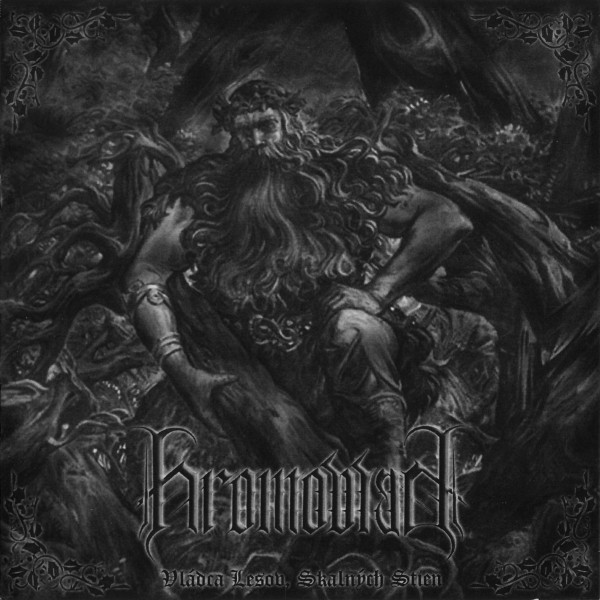
The debut album Vládca lesov, skalných stien was released in 2005 by the Czech label Long Ago (ex-Eclipse Productions) in a large issue of 1000 copies. The album was expected, as Hromovlad were by that time already an established band in the local scene. This is also due to the fact that Beelphegor, as the main frontman of the band, was well known from his previous musical projects. Another album that contributed to Hromovlad’s reputation was Heathen Brotherhood (2005). Apart from delivering new Hromovlad songs this locally well-known album also introduced the band Korium. Unfortunately, Hromovlad’s songs suffer from the sound of the drum machine, as was the case with Immortal Hammer, yet they also show the band’s direction for the future. The split also features Algor’s rehearsal tracks from the Promo 2000/2001. More than the musical quality of this split album, we can highlight the strong cooperation between the allied bands. This was the first time something like this happened in the local scene. The release was provided by the emerging label Krutoslav Productions on a CD in an interesting DVD format with underground black and white cover art. The main protagonist of Korium remembers this release as follows:
„In 2004, Peter from Krutoslav Prod. organized a „black metal“ gathering in Manínska tiesňava, which, besides bands featured on the split, was also attended by a few people from Poland and the Czech Republic. Since back then the number of projects playing black metal in Slovakia was really very small, we decided to make a triple split, which would also be something like a time-stamp of contemporary Slovak black metal.“
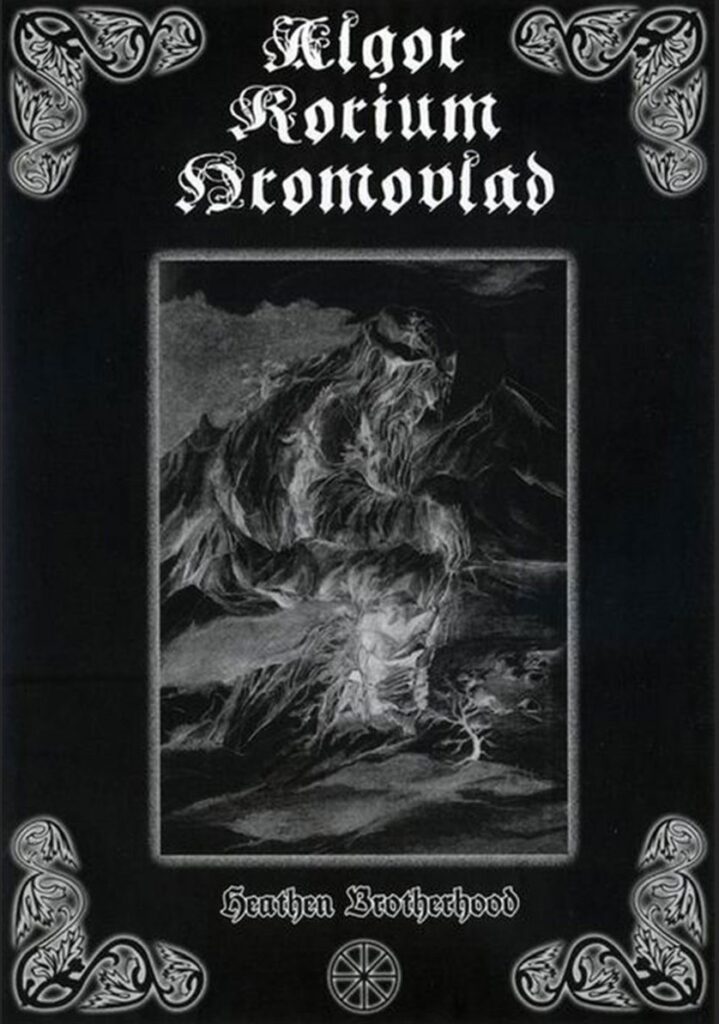
The debut album opens with the intro V objatí stromov. I have to commend the band for a really beautiful and interesting intro in an instrumental form. No unnecessary boring keyboard stuff but a regular song that prepares the listener for the title track, Vládca lesov, skalných stien. A big asset that raises the quality of the whole album is the skill of the drummer Slavfist (under the name Miroslav) of Algor. The vocals on the album are clear and comprehensible. The track is anthemic and contains melodic passages supported by a higher tempo. Finally, this hallmark can be heard throughout the album. The guitar compositions aren’t unnecessarily complex which works for this material. Case in point is the track Balada skazy, which is tastefully complemented by an acoustic passage with subtly out of tune choral vocals. There are quite a few of those acoustic passages on the album where the mouth harp is also used, for example the tracks Triste Est Mori and Žiť stromom. More aggressive passages can be found in the track Tiene minulosti. Guitar solos, on the other hand, catch one’s attention in tracks like Hromovlad and Hrom do toho! The album offers melodicism, acoustic passages with folk instruments, but also classic black metal. The sound is slightly sterile but pretty clear and, judging by the success this debut brought the band, accessible to the listener. A lo-fi underground sound is certainly not to be expected here. In conclusion, how to evaluate the first album of Hromovlad? Definitely the most melodic and accessible of all the aforementioned albums. The debut album was followed by another full-length called Ohňom hlad, vody chlad (2007) where a greater emphasis is placed on folkish instruments and melodies. But that’s another chapter in the history of Hromovlad.
From the icy straits where the gates of the cold mountains lie,
Where the known ends, and shrouded in darkness is
the eternal wanderer, the fate of nature alone,
Knows the destiny that haunts man´s memories.
The fire from heaven, the power of the wind, the flow of water.
Ruler of forests, of rocky walls, (is) forever bound to nature.
Finally, let us wrap up the three bands from the split Heathen Brotherhood with some of Silg Bor’s (Between Two Castles, ex-Korium) memories.
Greetings to you Silg Bor! The beginning of the new millennium belonged mainly to pagan black metal, yet during these times you started with your band Korium. What was the scene like at that time?
At the time, when I started with Korium, it was impossible to even think about the scene, here it was practically non-existent. The strong moments at that time were definitely the first albums of Immortal Hammer and Bluten. I remember how refreshing it was for me to finally hear demos full of rawness and dirty sound that came from Slovakia. However, due to the local situation, I was more in touch with people from the Czech Republic. Out mutual cooperation was a foundation that formed the black metal group called Nový Úsvit (The New Dawn) which consisted of these five black metal bands: Heiden, Hyperborean Desire, Korium, Stvor and Svardenvyrd. And even though it ended, my contact with some of these people continued, which was later reflected in the released split albums. Hyperborean Desire became Trist and Jaroslav continued under the name Holomráz after the dissolution of Stvor.
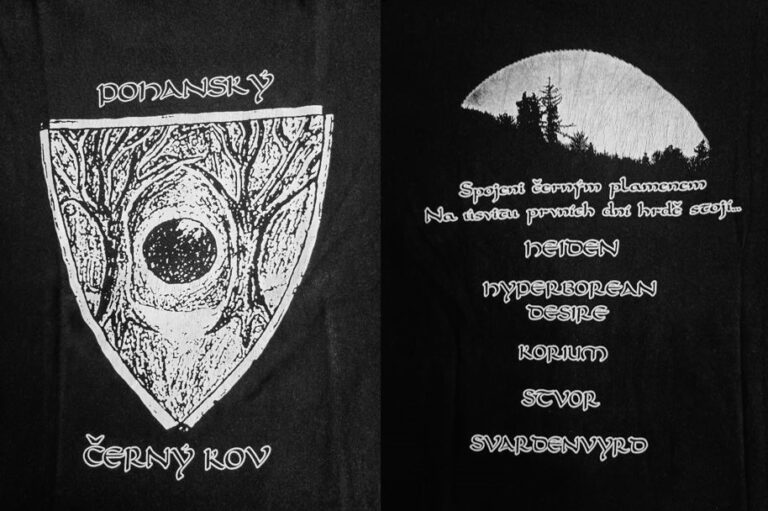
Before Algor or Hromovlad, the Black/Doom band Ethereal Pandemonium from Bratislava released their debut album A Winter Solstice Eve (1998) which also dealt with pagan themes. What is your opinion on this older record and the rest of their work after all these years?
At the time I discovered this band I was listening to Dusk and Her Embrace and Cruelty and the Beast quite often so in some ways a similar-sounding band from Slovakia was quite appealing to me. The album you mentioned, plus another one called Arcanum Lunae (1999), were two flashes in the Slovak sky that came out of blue. On both albums the band managed to bring something musically that could be called “archaic Slovak spirit”. At the same time, Arcanum Lunae was the last Ethereal Pandemonium album I listened to in detail as I later started to seek out rawer stuff like Ildjarn, Maniac Butcher and Judas Iscariot. Anyway, in my opinion, the first two Ethereal Pandemonium albums are gems and that’s how I can conclude my retro view of this band. Last year, the guitarist of this band, who used the pseudonym Herr Doktor, sent me a really nice present, the very last cassette of A Winter Solstice Eve he had. For me that makes the memory of this band even more special.
Korium has never openly declared that it’s pagan, but subtle hints can be seen in the first demos such as Mrazivá Noc Prináša Pokoj (2003) or Hradby Samoty (2005). I’m referring specifically to the tracks Runové tajomstvá pokryté snehom (Runic secrets covered by snow) and Zjavenie Polnočnice (Appearing of Polnočnica) and possibly your side project Morana. Do I understand correctly that this wave also influenced your beginnings?
You’re right, but paganism, as reflected in the music of regular pagan bands, has never been my thing. My music was influenced only peripherally in the two aforementioned songs. But of course, some personal aspect of these themes, which is rather dominated by my own imagination or my own perspective, can be found in my late work as well. As an example, I could mention the lyrics on to the second Between Two Castles demo Carpathian Darkness (2022). But it’s really first and foremost my own imagination, which to some extent has always been influenced by something from the outside. The band Morana released only one demo because shortly after I created all the music and lyrics for it, I realized that working in a band with more members didn’t fulfill me. I felt that creating music in the one-man project Korium suited me better. The result of Morana’s demise was that the bass player Venetar started his own project Mare Crisium and I tried to support him in this endeavor.
The demon of death connects lives
Closes the circle of every being
In the depths of the subconscious it awakens questions
Waiting for her voiceless arrival
Closes the eyes, makes it impossible to breathe
The last moment on earthly roads
The body turns to stars, to dust
And thoughts? …to dust
The demon of death, the apparition of polnočnica
A single breath, the end of existence
Strigor – Povstaň rod Strigorov (Rise, house of Strigor)
As the last band in this first part of the series we will introduce one unusual and now long-forgotten project called Strigor. Their debut material was titled Povstaň rod Strigorov and it was released by Krutoslav Productions in the year 2004. Krutoslav Productions was a label which was active in the early years of the new millennium. It released and promoted various recordings from the Slovak pagan underground. It not only supported several of the aforementioned bands with releases but also did a pretty good job of distributing foreign titles. But, just as most bands eventually go to eternal sleep, Krutoslav Productions suffered a similar fate. Nowadays only memories and rather hard-to-find releases remain. One of these releases was a folk/dungeon synth band called Strigor. This group, or rather duo, Andrej and Stanislav, released five songs under the title Povstaň rod Strigorov. It was a unique creation at the time as there were hardly any similar bands working with this genre. I can only think of Kovlad from Bratislava: an enthusiast who made fairly simple, straightforward, pagan dungeon synth with hand-drawn Xerox covers on cassettes. Strigor, however, upped the game. They impressed with appealing graphic artwork and significantly better production. They created an interesting story which had elements of the magical fairy tales of Slovak writer Pavel Dobšinský combined with a heathen atmosphere. Compared to other foreign groups who used similar themes, they avoided unnecessary patriotic clichés. Instead, they developed an interesting and fictional story which progressed throughout the five songs. Stanislav remembers the beginnings of the group as follows:
„The idea to create Strigor came after me and Andrej met. We both liked similar music, mostly black metal and its offshoots. I think Andrej was already toying with the idea of creating something at that time, as he played acoustic guitar and, unlike me, had musical talent. He had already created some lyrics with pagan themes. I was more of a fantasist and a dreamer, who had certain ideas and visions in my head, but couldn’t translate them musically into something meaningful. Since I liked old stories and fairy tales and was a fan of radio plays, I had the idea of coming up with a project that would be a combination of several influences. In this, Andrei and I were a perfect match, and that’s how the story of Strigor began to be written.“

Povstaň rod Strigorov begins with the song Hor, where the dark tones of the synthesizer and eerie vocals evoke the aforementioned Dobšinský fairy tales. A supernatural atmosphere is present throughout the material and is tastefully complemented by various sounds, whispers and organ. In Posolstvo matky Mordeny there are also strings and distinctive vocals. The song Povstaň Strigor, in turn, uses electric guitar. The atmosphere takes hold and culminates in the last track, Bitka posledná. The contribution of this album is definitely the story. The fairy-tale atmosphere reminds us of Zemetras, Popolvár, Nebojsa and other characters from Dobšinský stories. Throughout the album, one feels as if one is listening to a radio play hearing the sounds of wind, fire, whispers, creaking doors and accompanying music.
„At the time Strigor was being created, we didn’t even know we were making dungeon folk synth. We didn’t see it that way. We just worked with what we had, although the idea of being original was a big inspiration for us. We wanted to get as close as possible to the atmosphere of the old radio plays, where spoken text was accompanied by various sounds, but at the same time add some of our music to it.“
The Strigor duo recorded one more album, Púť kráľa Strachana (2007), which follows a similar thematic and musical style as the first one. The band ceased to exist afterwards.
***
In the Sign of the Sun
In the previous part of this series, we talked about the first years of the new millennium. We mentioned the essential records of the local scene which established pagan black metal in Slovakia. The scene at that time was not very large and, apart from a few enthusiasts and bands, did not grow very much. However, the black metal flame was lit and interest in paganism was growing. New bands started to emerge. In this article I will present the most important ones.
Concubia Nocte – Sekerou Peruna a Kladivom Thora (By the Axe of Perun and the Hammer of Thor)
Concubia Nocte appeared on the local scene in 2005 and didn’t keep the listeners waiting too long for their first material. A year later, the demo Z Najhlbšej Noci (2006) was released. It had UG production and was composed of five tracks that were simplistic and raw in the style of Ukrainian Hate Forest. There were two musicians in the band at the time, namely Nocturnal as the guitarist and the composer of the music and Svarthen (Karpathia) as the vocalist and bassist. The two were later joined by Sladuban on keyboards and Volgar on drums. In 2008, the band’s debut album came out through Canadian label Morbid Winter Records which was at that time releasing the world’s top pagan black metal. Let’s have a look at this piece.

At the time of its release, Sekerou Peruna a Kladivom Thora was quite an unconventional album for the local scene because no one here played a style which was similar to the Ukrainian Nokturnal Mortum and their iconic demo Lunar Poetry (1996). I am not saying that Concubia Nocte were a copycat, but one can feel an indisputable similarity with this Ukrainian cult album. Similar features characteristic of Concubia Nocte could also be found in Russia’s Ashen Light and their debut album Песнь Велеса (Song of Veles, 1999), although Nocturnal added something more, namely Slovak folklore in the form of inspiration from Slovak writer Dobšinský and his fairy tales. The band wrapped the whole music in a slightly dirty production, making the black metal parts sound aggressive and the melodic keyboard and guitar parts sound appropriately pagan. The album didn’t regress into folk metal, as happened to many similar pagan black metal bands, but stuck to its black metal basis and delicately developed its pagan and folk elements. The underlying theme was polytheism and the common elements of Slavic and Scandinavian mythology. In an interview with our webzine, Nocturnal comments on paganism as follows.
„I did not perceive neo-paganism in purely theistic terms, but rather as a cultural expression of a nation’s free spirit. My inspiration was Friedrich Nietzsche. Thus, I understood the deities as a kind of „super“ version of man, as images or personifications of particular attributes of the human spirit and the possibilities which man should look up to on his way towards self-improvement and the creation of a new existential meaning. To look up to them, but not to bow down. And of course, they manifested in both the Slavic and the Scandinavian pantheon. I wanted to point out, but rather subtly, certain similarities in values and a probable common ancient origin.“
From the shortcomings that can be felt on this album, I have to point out the artificiality of the keys and the slightly obscured sound. However, I think that if it wasn’t for this imperfection, the album would probably sound too „soft“. Sekerou Peruna a Kladivom Thora was complemented by excellent lyrics playing with the Slovak language skillfully. They also delved into Slovak folklore, specifically magical fairy tales in the song Laktibrada. Together with the visuals, which beautifully complete the whole album, I see the contribution of this album is a certain fairy tale element. Where Strigor was inspired by radio plays that dealt with local folklore, Concubia Nocte clearly references Dobšinský and translates the world of supernatural beings and gods into black metal. Nowadays, we can see a similar element, for example in the work of Stangarigel.
„I have been fascinated by Slovak folklore since my childhood. I remember flipping through Dobšinský’s book Slovak fairy tales, illustrated by our national artist Albín Brunovský, and a completely different, almost magical, world opened up before me. I also loved the audio adaptations on LP such as Lomidrevo, even though they were a bit different from the written form. That’s probably where I first encountered this insidious and malevolent being, Laktibrada. Why Dobšinský? He was the first Slovak writer that I encountered. And why folklore? I think that it is in folklore that the characteristics of a particular nation are handed down. The hardships, sorrows and tragedies, as well as the valiant deeds, were preserved by our ancestors in this wisdom that reflected systems of values which are in my opinion nowadays forgotten. What the common man had to deal with back then was transformed into stories by oral tradition where the lessons represented a certain way of looking at life, but there was also a place for the otherworldly or mystical: various beings, gods, ghosts and the like. That was always appealing to me, as it was basically an original and creative way of interpreting metaphysics, the fact that there is another world beyond the one we can perceive with our own senses. And I was also fascinated by the fact that the original author was unknown, as Dobšinský put together collections, and that through this oral tradition people could alter or add something of their own to the Slovak folklore stories. I think that in our culture this is the most authentic expression of spiritual creativity.
After 2008, Concubia Nocte’s activity gradually declined. In the following years the band released various EPs and split albums but we didn’t see any material similar to the debut album. And so, this gem remains a reminder of a period when magical fairy tales appeared in Slovak black metal.
I am short for a man, yet have a long beard,
my name is Laktibrada
With the path of mine
you will arrive where you want
Human’s (Yours) weakest weakness
will be judged by forest and wind
You believe in me but I do not in you
death to you and mist to me…
Slavigrom – Návrat Slovanskej Nenávisti (The Return of Slavic Hatred)
In the year 2005, a community of black metal fanatics was formed in the cold, northern parts of Slovakia, namely Kysuce, who between the years 2005 and 2015 founded a large number of interconnected bands and released an impressive amount of material. However, we’re interested in their first addition to the local scene, the band called Slavigrom. Slavigrom officially started in 2005 with the line-up of Deadwind (vocals), Carpath (guitar), Hellbutcher (bass) and Dlog (drums). Dlog described the beginnings of Slavigrom as follows:
„…The year 2005 saw me, Carpath, Deadwind and (short time member) Hellbutcher form the band Slavigrom. And why pagan black metal? We were hugely influenced by bands like Nokturnal Mortum, Graveland, Veles, Arkona (PL), Inferno, Algor, Immortal Hammer etc. The themes of paganism were very close to us at that time and fit nicely into our work. I think those were pretty good times. We met a lot of good people and bands that I’m still in contact with to this day. It was a pretty extreme time, but I still like to reminisce about it. That kind of rebellion against everything and extremism just kind of came out of us naturally.“
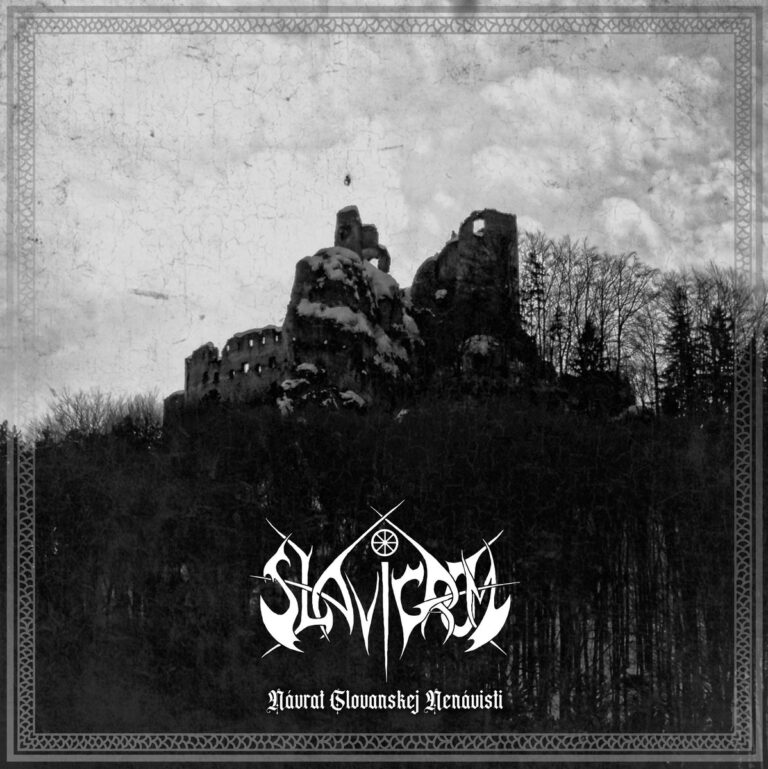
After the initial, strictly limited demo consisting of one track, Kruté Pohanské Víťazstvo (2006), came the material which has become quite popular in the local scene: the second demo, Návrat Slovanskej Nenávisti (2007), which seems to loosely refer to Algor’s debut album. It is pretty easy to spot the similar features between these two bands, since, just like Algor, Slavigrom choose the way of the raw, classic black metal. War paint, fast tempos and hateful lyrics, in which Slavigrom pushed the imaginary bar higher with their malice and aggression, were perfectly complemented by rough production. Where other Slovak bands, such as Karpathia, Immortal Hammer and Algor, relied lyrically on themes of nature, Slavigrom spread wickedness and suffering. The material was self-released by Dlog’s label Suicide Taste Productions in a limited number of CDs and MCs. This was the label that released all of the bands hailing from Kysuce scene. After sixteen years, this album was finally released on a LP. The release happened a year ago and was done by local label Hexencave Productions in cooperation with Czech Murderous Music Production.
But let’s go back to the material. The music is straightforward, composed of simple, often catchy riffs combined with fast-paced drums. The vocals are hateful and fit the sound of the material perfectly. The composition of the songs goes from more aggressive and fast tracks to more epic ones played at medium tempos. Despite this being a demo, production isn’t that bad. Overall, Slavigrom’s music reminds me of bands like Polish Arkona or Czech Maniac Butcher. At the time of the release, the band were also appearing at local gigs, which helped to promote this demo and made Slavigrom known and respected in the local underground. Dlog’s and Carpath’s later musical activities eventually ended up with two essential names of the local scene, namely Warmarch and Evil. But that’s another chapter.
After Návrat Slovanskej Nenávisti came quite an interesting EP called Kraj Temný (2008), followed by a split with Moravská Zima (2008) and another one with Hromovlad (2009). Slavigrom then transformed into standard black metal without pagan influences, changed its name to Ruin of Hedonism and ceased to exist. The cooperation between the two musicians ended and each of them carried on with projects of his own. Dlog will explain why Slavigrom ended.
„In the later period of the band, it was pretty difficult. Everyone started to go in a different direction but Slavigrom was not going anywhere. Deadwind had a different idea for lyrics and music at the time and Carpath was leaning more towards doom metal. In the end there was also a slight misunderstanding between me and Carpath and our musical paths diverged for a while. I went abroad to work and I wouldn’t have had time for a band anyway. Then came the changes with the logo and the name. I didn’t follow it anymore after that, as I was out of it. But the collaboration between Carpath and Deadwind was also short, as Slavigrom (renamed to Ruin of Hedonism) had ended before it even started. There were only two songs, which were released on a split album with Algor.“
So, what was Slavigrom’s contribution and why did we mention Návrat Slovanskej Nenávisti? I think it was the youthful anger and aggression which the Slovak scene needed. Slavigrom lit a torch with its demo and passed it to others who didn’t see pagan black metal only through the lens of folklore, the pantheon of deities and nature, but also as a resistance to Christianity. It may sound like a cliché, as this theme is quite common, but Slavigrom had an authentic, orthodox feel to it.
Burning sword shines with horror
Pagan blood rages for victory
Hail the total war!
Hail the Slavic vengeance!
Ancestral Volkhves – Perun do Vas!!! (Perun Into You!!!)
The folklore diversity and cultural richness of Eastern Slovakia can be seen in its renowned festivals and various TV shows. It is therefore not surprising that one of the most popular local groups comes from this part of Slovakia, specifically from the town of Svidník. And to make it even more interesting, this is a group of musicians with Ruthenian roots, who transformed their inspiration from nature and rich folklore into two remarkable albums.
Ancestral Volkhves began their musical journey in 2001 with the demo Going Towards the Gates of Mystery… The demo suffers from a number of flaws but it also shows the potential that the band developed on future recordings. In 2004, the band’s debut album Son o Iriyi was released by Krv Records and with it the band began to be a part of the pagan black metal wave. Son o Iriyi, although well-produced, did not bring the band much success. One could say that it set the stage for its successor, which blew away many pagan black metal fans. We are talking about the album Perun do Vas!!! which was released in the year 2008.
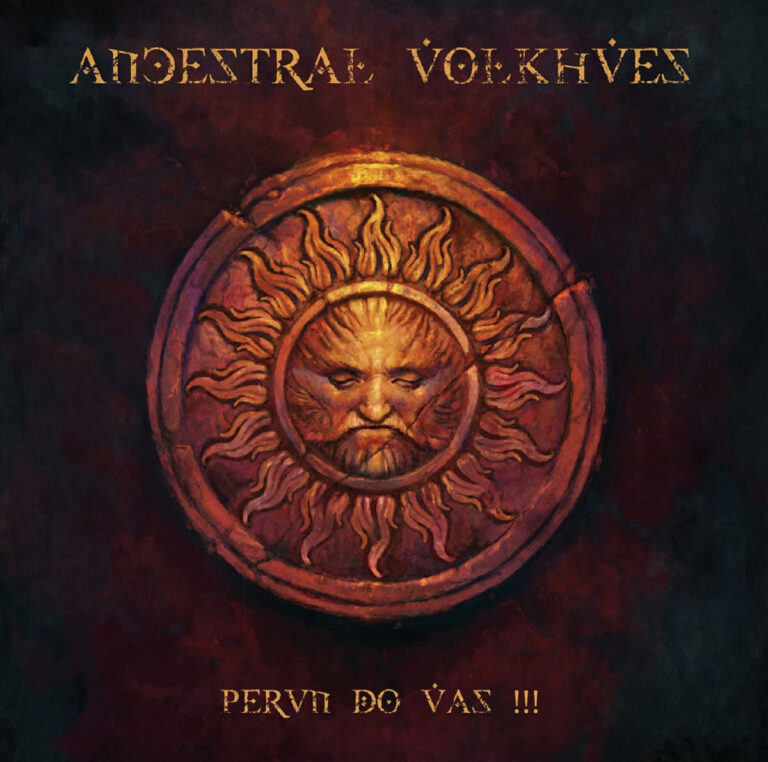
Perun do Vas!!! is an album that had all the predispositions to break through not only at home but also abroad: studio sound, catchy riffs, excellent vocals and a prominent guest, Masha from Russian pagan folk metal band Arkona. But despite possessing the prerequisites, sadly it wasn’t enough. The album was released in 2008 by the Russian label Soundage Productions with a rather bland front cover. It contained ten songs sung in Slovak and Ruthenian. At the beginning of the year 2023 Slovak label Beyond Eyes released this album on LP with brand new graphics. The concept of the whole album was excellently built. The faster, punchier tracks transitioned into a slower mid-tempo, giving the listener’s ears a short time to rest. Speaking of the faster songs, I have to say that from of all the bands mentioned in this series of articles, drummer Dod delivered the biggest cannonade, as if straight out of Verdun. The songs were aggressive with blast beats similar to those of Sweden’s Dark Funeral but with much cleaner production. Gone were the death metal elements that appear on the debut album and the emphasis was on punchy riffs without complex compositions which were much more accessible and melodic. As the grand finale come Černorog’s vocals. He’s one of the best on the scene, whether we’re talking about his black metal scream or clean vocals. One could hear those at the band’s frequent concerts at home and in Eastern Europe, where this album was presented. The icing on the cake were the lyrics, which were very well phrased and clearly sung by Černorog, so there was no problem for the local fan to understand band’s message. How the lyricist Černorog understands paganism is explained in an excerpt from our earlier interview with the band.
„Lyricism is primarily concerned with life and the human. There are thousands of ways to express an idea. We express it this way because as time has passed, history has arrived at this point, a point of our existence and we are thus part of it. We try to find a place in it for our work as a reflection of our (in)human understanding of various themes. I wouldn’t talk about paganism.“
„I refuse to call them deities in this context. I understand them mainly as symbols denoting certain selected cultural characteristics, values, attitudes and patterns of behavior. This is one of the oldest perceptions and interpretations of material reality and spirituality. All these meanings need to be constantly re-evaluated. It is necessary to assess whether it is just a cultural relic or a nice tradition, or whether it is a real functioning construct both on a personal and on a general level. Accordingly, I give weight to this-or-that phenomenon, in this case, the phenomenon of Slavic deities. Therefore, I cannot imagine that I should take part in any ceremonies. It is just a beautiful tradition for me, but on the other hand, as I said, I very much support the people who devote their time and energy to preserving it.“
Perun do Vas!!! represents a certain turning point on the scene that occurred after the year 2008. In the following period Karpathia’s debut album was out and since then the local scene has not seen any similar aggressive pagan black metal albums. Finally, after some concerts and participation on the album In Honour of Icon E – A Tribute to Emperor in the year 2012, Ancestral Volkhves called it quits. Černorog is currently involved as singer and lyricist in the band Obšar which has picked up where Ancestral Volkhves left off but without the distinct pagan element. Nevertheless, this band released an excellent album on which they merged classic black metal with a Ruthenian folk touch. And this is in my opinion the added value, the cultural uniqueness and diversity even in such a small scene as ours. With each local band you have a distinctive style of black metal and with each local pagan band, its own unique understanding of paganism.
Into the darkness we put our ancestors
Who died for the songs of faeries
Let the winds blow through the mountains
For their eternal glory
Into the darkness we put our ancestors
Who created nations
Let their burial mound
Be a symbol of freedom
Karpathia – Urheimat – Volanie Havranov (Homeland – The Calling of Ravens)
In the year 2006, the band Evil Dead ended their journey with their first and last full-length album, Spomienky na predkov (2006). The pagan lyrics on this record represented a departure from their previous work, therefore Karpathia could pick up where Evil Dead left off. It was formed by the same trio that laid the previous project to rest: Svarthen responsible for guitars, keys and vocals, Odolen on bass and as the lyricist, and Askold behind the drums. It should be noted that back in 2004 Svarthen released the only demo of his project called Stronghold, titled Volanie stromu smrti, which was also lyrically leaning towards paganism but audially was more of a predecessor to Aeon Winds because of the emphasis on keyboards.
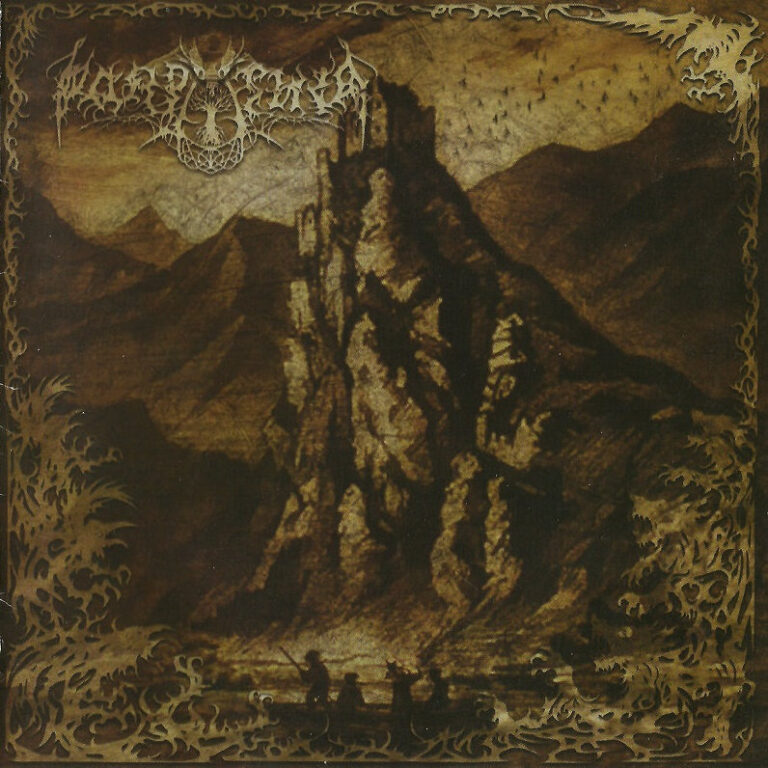
But let us return to Karpathia. The aforementioned line-up released their debut EP Brieždenie nad striebornou zemou (2007) the following year and later a split with Sirin, which was re-released under the title Age of Myths and Legends in 2013. On both records, the musicians presented the characteristics that had accompanied their work throughout Karpathia’s existence: fast-paced black metal with keyboards, plus ambient and orchestral elements. A few words about how Svarthen remembers the early days of Karpathia:
„The beginning of Karpathia was a change of the genre we had been playing with Evil Dead. Our music started to be more coherent, complex and mature. We added keyboards as a standard element and began to deal with paganism. However, this already appeared on Evil Dead’s debut album, “Spomienky na Predkov”, and in my solo project Stronghold.“
The following period saw the addition of Nocturnal (Concubia Nocte) as a second guitarist to the Karpathia line-up, and everything was ready for the magnum opus, the album Urheimat – Volanie Havranov. It was released in 2009 by the Canadian label Morbid Winter Records. On this 50-minute-long recording the band retained most of the characteristics of their previous period, with the orchestral instrumental songs taking a back seat. These are represented here with only two tracks, namely V plameňoch zatmenej pravdy and the outro, Stronghold of Night Wolves, which is a variation on the third song Stronghold of Wotan’s Wolves. The backbone, however, is honest, guitar-based black metal complemented by acoustic guitars, clean vocals and keyboards. Compositionally, the material is artfully put together, although some tracks are marked by frequent pauses and not quite smooth rhythmic transitions. What spoils the overall impression is a rather chaotic and at times not very intelligible sound. This deficiency was remedied to some extent by the reissue of the band’s complete material under the title Spomienky hôr karpatských (2021) by the Polish label Werewolf Promotion. In the music itself, pagan elements are more of a „sprinkle“, most prominently in the track Stronghold of Wotan’s Wolves. More of them can be found in the lyrics. These are partly oriented towards themes of nature. However, as the title of the album suggests, most of the lyrics go back to the Indo-European origins and the values or ideals of a long-forgotten past. The lyrics of the song S posledným lúčom slnka are an excellent example. Odolen remembers the message of Urheimat as follows:
„In the beginning we were mainly influenced by the Polish and Eastern European scene. I remember that we listened to hours and hours of music. That’s how black metal came to us and with it paganism. At that time, I was quite interested in the history of Europe and the ethnogenesis of the Slavs and other Indo-European peoples. While reading one of the scholarly publications I came across the German term Urheimat – „homeland“ – and that’s how the concept of Karpathia’s debut album came to my mind. The lyrics had two levels. The first one was historical, where I addressed the common origin of Indo-European tribes, the „search for roots“. And the second level was related to the values: a return to the original values and virtues, a heroic death in spite of certain doom, the death of one’s own „self“ through a spiritual rebirth. This was the message of „Urheimat – Volanie havranov“.
But after Urheimat – Volanie havranov there wasn’t another album. Back in 2010, Karpathia appeared on the ambient split Elegies of Endless Horizons (2010) together with Igric and Perterricrepus. The record, which featured Svarthen’s three instrumental compositions, was released by Tryzna Production. However, this was already the band’s swansong. Svarthen describes its ending as follows:
„Karpathia was an important period of my musical life. But I felt I had to move on in a different direction. It wasn’t just a lyrical change but also a transition to a completely different musical concept. That was the main reason why Karpathia ended. Aeon Winds was supposed to be a side project at the beginning, but as time went on and things were moving, I became more and more distant from Karpathia. I didn’t feel like continuing anymore, so I put my energy into Aeon Winds.
„Looking back, I consider Urheimat to be a very solid album, musically and conceptually polished, with proper lyrics and fine graphics done by Wolkogniv. I think that its weakness is the sound. We did the best we could at the time. If there was better mix or the album was recorded with the possibilities we have today, it would look a lot different. For that time, it was timeless material, maybe I would say it still is. The spirit of the record that we managed to capture back then is actually an echo of a time when we were all pulling together as a band.“
The main composer Svarthen turned his attention to the band Aeon Winds, no longer using the pagan themes. He altered musically as well, since the usage of keyboards in Aeon Winds differs. Karpathia thus followed the trajectory of most of the Slovak pagan black metal scene, its career peaking before 2010 but subsequently failing to follow it up.
The path of ancestors is on the wings of ravens,
the body falls asleep under the oaks.
Spirit will be eternal in the heroic deeds
With the last breath of your body.
***
The smouldering fire
In the previous parts we delved into the topic of Slovak pagan black metal. However, we are left with two last questions to answer. Where has pagan black metal gone and why can we consider this subgenre to be rather marginal today? I think that the reason could be the exhaustion of creative energy and the gradual disappearance of pagan black metal bands, or in some cases the transition to „softer“ metal genres such as folk metal and pagan metal. Bands are dropping black metal elements and adding more and more folk ones. The lyrics, logos and overall visuals are changing. This is a phenomenon on the scene that is slowly beginning to appear abroad and after 2010 also here. It is in this more musically accessible form that bands gain the greatest commercial success. However, it also marks the beginning of the gradual demise of pagan black metal. In our country we also encountered this phenomenon and it was manifested by the gradual dissolution or transformation of bands. Slavigrom, Concubia Nocte, Hromovlad, Strigor and Karpathia ceased to exist. Others, such as Ancestral Volkhves and, more recently, Immortal Hammer, have entered eternal hibernation. Alternatively, some have over the years drifted away from black metal, such as Algor. However, it cannot be said that pagan black metal as a genre has died out completely. There are still bands left that carry on the legacy of the most famous names of this style. However, compared to the wave of bands that swept through the European scene in the late 90’s and early 2000’s, these are quite niche. The final lines will be about the last names from the domestic scene that can be included in the pagan black metal wave.
Alatyr – Alatyr
2007 was a fruitful year for many groups. Karpathia released their debut EP Brieždenie nad Striebornou Zemou (2007), Slavigrom came out with Návrat Slovanskej Nenávisti (2007) and Alatyr released their debut album with the eponymous title Alatyr. And this is the material that will be discussed today. This is the first and the last band in this series of articles, which musically relies on the creative potential of one individual. We are talking about multi-instrumentalist Igric. He and his vocalist Striibog were behind the project called Alatyr. I mention this group under the label “project”, as Igric has been around as a musician on the local scene for quite a long time and has been behind several similar ensembles. Alatyr and Igric are among his oldest. The problem with Igric’s recordings is the vocals. He was not able to find a permanent vocalist, but the year 2007 was fortunate in this regard and thus the creative duo of Striibog and Igric released their debut album. The release was done by the American label Candarian Demon Productions in a volume of 1000 copies on a standard CD.

On the domestic scene, Alatyr has attracted attention, but in a different way than one would expect. The album was neither fast-paced, nor aggressive, nor folk-melodic. It had a slow tempo and thick atmosphere created with keyboard melodies. The vocals felt more like shouts and the album gave off more of a melancholic mood. The lyrics described loneliness and death combined with nature metaphors. We could analyze the album on two levels. The first is instrumental, such as the opening track Alatyr, where a keyboard composition is built on a somber atmosphere. The second level is black metal-ish, represented by songs such as Popol or Priepasť, played at medium tempos with depressingly tuned vocals, which is not quite standard for pagan black metal. The guitars don’t rush, playing the individual riffs and artfully complementing the melodies of the whole composition. The keyboards follow the guitars in a perfect symbiosis. A good example is the track Hviezdy, which I consider to be the highlight of this album. This characteristic feature has remained in Igric’s work to this day. Putting aside the fuzzy sound of the guitars, the imperfections of the drum machine and the vocals, Alatyr sounds very similar to Igric’s last album, despite the fifteen-year gap. On the negative side, one can mention the rather artificial, sometimes strangely programmed drum machine and weaker production. From the positives, we could mention the thick atmosphere, interesting melodies and keyboards that fully support the guitars. The pagan elements on this album we can find in the dreamy atmosphere, melodic guitars, keyboard progressions and the concept of the whole material. In the lyrics we find only a few references.
After a rather successful debut, the line up changed on the following material, Zemou Zabudnutia (2016), but we had to wait nine long years for it. Finally, those who follow the local scene know that Igric releases his records with considerable time gaps. This happened with Alatyr as well, and so a well-established group with positive foreign reviews was rather quickly laid to rest. The last glimmer of hope is Igric and his current output, such as his second album Svet Svetlom Stvorený (2021), but also, a rebirth of sorts for Alatyr in the form of the release of the unreleased album Zemou Zabudnutia (featuring Striibog as vocalist), titled Do Zeme Zabudnutia, in the year 2022. This is the band’s last exhalation.
There, where only the howls of the wind can be heard
There, wind, spread the ashes!
Blow them away to eternity!
To places inhabited only by demons
of wind and frost
Pagan Spirit – Hlasy vzývajúce starú vieru (Voices Invoking the Ancient Faith)
Pagan Spirit were undoubtedly one of the oldest bands on the local scene. Their roots go back to 1999 and we could call them “veterans”. They have three full-length albums and a demo called Grimoire – Mysteries Arriving with Death (2002). The band started with Satanism on The Latent Doctrine (2005), continued with paganism on Hlasy vzývajúce starú vieru (2008), and finally transitioned into cosmic realms on The Record of the Returning Race (2020). We’re mainly interested in the second album which we will analyze in the following lines.

Hlasy vzývajúce starú vieru is the title for an album released in 2008 by the label Hrom Records. The album contains an hour of music which is divided into ten tracks. The cover art depicts a ceremonial site with an idol in ritual flames. The statues are strikingly reminiscent of the stone statue of the god Radegast on Radhošt‘ Hill in the Moravian-Silesian Beskydy Mountains (Czech Republic). The album opens with the track Dávne svedectvá where a majestic overture with male choruses goes hand in hand with the rhythm of cymbals. The material is full of death metal progressions, tempo changes and fast guitar solos. The bass is heavily distorted, which, with the overall undertones of the other instruments, puts this album more into death metal genre. This is clearly noticeable in for example the track Lesný Chrám or Útok na juhu Darkslavie. However, we can’t talk about pure death metal. Pagan Spirit combine classic black metal in the spirit of Norwegian Immortal with death metal elements. The songs start off with a fast blast beat in the beginning and progress into classic double kick rhythms with guitar solos and vocals. The latter has various types. The black metal scream suits the songs best and is clearly understandable. Clean vocals can be heard as well, but they come across as out of tune in some places.
Thoughts united in one circle
As in the old times so today
Falcon spreads its wings
And the heritage of our fathers
with spears and swords we shall protect!
The lyrics are sung in Slovak and the songs are divided into three acts. In the fictional story, the old faith meets the new Christian religion in a religious struggle. I appreciate the variety of percussion, which does not bore. On the contrary, it pushes the songs to a higher level. I would also like to highlight the use of undistorted guitars on some of the tracks. The end of the album, as well as the introduction, belongs again to the epic, the longest song in terms of minutes. It is Pieseň pre Predkov, which combines all the above-mentioned attributes that this album possesses. Drummer Daimonion commented on the lyrics in our interview as follows:
„Last time I listened to the album, and that was after a long time, I was surprised by the energy and nostalgia that came from it. I think the band was at its peak then. We knew what we were going to create and what it was going to be all about conceptually and we enjoyed creating it. The emotion of paganism was big in us then, it was clear that the album Voices… had to be about exactly that. The story is about the Slavic tribes of the Darmon and Silman, about the violent penetration of foreign religious elements among the indigenous deities and the efforts to resist these influences. It is a story full of the struggle of magic and the confrontation of the characters in it.“
Hlasy vzývajúce starú vieru brings a specific style of black metal which has not been represented by anyone else in Slovakia except Pagan Spirit. They have skillfully combined it with death metal, thus departing from their idols and creating their own thing. The album is on the one hand aggressive and guitar-driven, on the other hand epic and atmospheric. They are the only one among all local pagan black metal bands to come up with a fusion of two extreme genres. They were also able to get the pagan elements into Slovak death metal. Of all Pagan Spirit’s releases, this album is the best that this band from the Tatra Mountains has produced. If one is into the Slovak pagan black metal scene, the album Hlasy vzývajúce starú vieru cannot be bypassed. The last words belong to Daimonion:
„We took inspiration from bands like Masters Hammer, Bathory, Immortal and especially Emperor. Death metal elements were present and I think it gave our music the necessary aura. We got positive feedback: the Slovak lyrics especially resonated, as well as the good delivery of them. Hlasy vzývajúce starú vieru is an album that you can’t replicate, its distinctive flavor was given by our passion, commitment and the time itself in which it was created.“
Krajiny Hmly – Keď Padnú Hmly (When the Mists Fall)
Finally, we’re going to take a look at Krajiny Hmly. Of all the bands mentioned, it is the only one that is still actively playing live and releasing new albums. Although it is the youngest, the core of the group consists of experienced musicians.
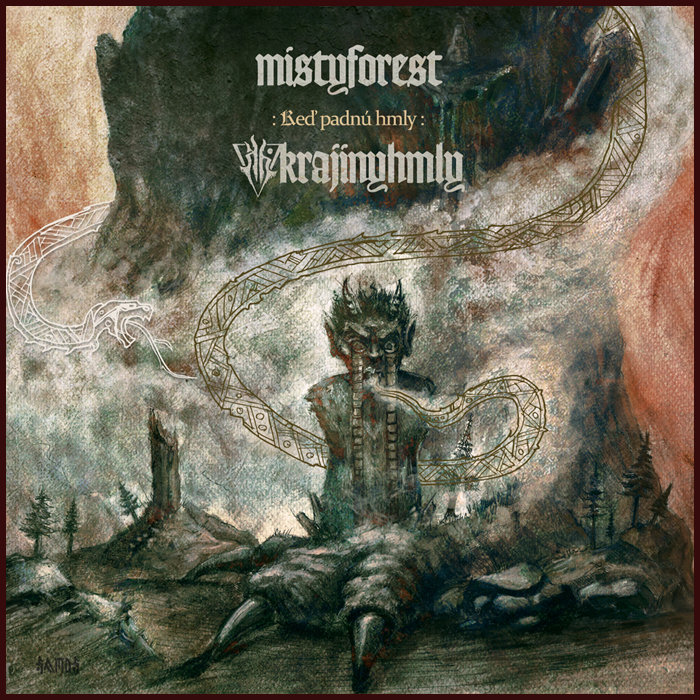
Krajiny Hmly was formed in 2011 as a project of Namtar, a former member of Imperium and Aeon Winds. In 2012, with the help of Svarthen (vocals, keyboards) and Askold (drums) from Aeon Winds, they released their first material Keď Padnú Hmly. It was released on a split album with Misty Forest. Namtar asked Wolkogniv, at the time a renowned graphic designer, to join as a vocalist. We’ve covered his artistic endeavors in more detail in a separate article. Wolkogniv remained in the band until his tragic death in 2017. After personnel changes, the band is still going strong today. You can check our review of their last album Cez Ostrie Skál (2022). Today, however, we’re going to go back to the very beginning and analyze the first material that brought the musicians together in order to bring Namtar’s musical ideas to life. He revisits the beginnings in our earlier interview as follows:
„My time in Aeon Winds was different, the line-up was made up of much more experienced musicians and there was more emphasis on live performances. Instrumentally, I got quite a bit better playing in the band, which logically also helped me to start working on Krajiny Hmly as a new project of my own. In both Imperium and Aeon Winds I worked with other guitarists, in Krajiny I had to learn to compose the core of the music myself, relying on others much less. On the other hand, it was also quite liberating. I started working with the vision I had: more compositionally challenging songs and lyrics with different lyrical content. I wanted to get what I liked about Slovak folk ballads into black metal. These are sadly attuned, often ending in death, but there’s a gradation, a blending of themes from love to sex, nature to violence, hilarity to drunkenness. With the recording of the demo, Krajiny became my musical priority, and I also moved out of western Slovakia because of my job, so I logically said goodbye to Aeon Winds as well.“
Keď Padnú Hmly is composed of material that has two parts. The split opens with Misty Forest and their eight longer songs. The band from the town Martin (located in central Slovakia), consisting of Nekros and HellCommander, present their strong and atmospheric material. The songs are slow in doom metal tempos with dragging black metal riffs and extreme vocals. The black metal is suitably complemented by dark ambient, e.g. in the track Tok. The music is melancholic, at times almost depressing, deeply immersed in dark pine forests and mountain solitude. The compositions are reminiscent of Burzum during the period of Hvis lyset tar oss and Varg’s later ambient work. Misty Forest were never among the domestic pioneers of pagan black metal. Rather, their mainstay was nature themes. Nevertheless, this material is worth your attention as it shows the best of what the duo Nekros and HellCommander recorded.
The second half belongs to four fast and punchy pieces. Krajiny Hmly, consisting of Wolkogniv (vocals), Namtar (guitar, bass, lyrics), Svarthen (vocals, keyboards) and Askold (drums), recorded energetic material at home that pushes this split into completely different spheres. The songs are built more in the mids with specific guitar variations that represent Namtar’s signature. He would develop this fully in his later work. I chose to include this material in this article because of its youthful aggression, dirty sound and specific atmosphere that manages to materialize excellently here. The vocals are intelligible and powerfully guttural. Wolkogniv sings confidently despite the fact that this was only his third vocal attempt. Together with Svarthen, who supports him vocally with a typical black metal scream, they create a perfect symbiosis. Svarthen’s keyboards don’t bore, on the contrary they accentuate Namtar’s guitar pickings. Themes of nature and death appear in the lyrics. I have to commend Namtar’s writing style and artistic content. The use of the poem Plameň už tíchne by Janko Kráľ (Slovak romantic writer) is also interesting. If I am not mistaken, this is the first use of poetry in Slovak black metal. In our earlier interview Namtar comments on paganism in connection with black metal as follows:
„Black metal, or at least a part of it, has been associated with a return to a dark forgotten history and a certain anti-modernism since its beginnings. So, it’s no wonder that people also go back to their roots when looking for inspiration in black metal music. For me, it’s also an artistic challenge to use these elements in a way that their involvement is logical and doesn’t sound kitsch. For some people, opinions and ideals are just a kind of mimicry that makes them adapt and gain advantages, choosing them according to the current fashion. Others seem to expect the impossible (even) from paganism, that it will change them inwardly and transform their lives and preferably instantly. But no worldview or religion can do that. And for the rest, paganism is not for them, it doesn’t meet their expectations, so they move on. I don’t think it’s a phenomenon of our time, but today people are certainly more inclined to change one product for another, to constantly look for something better, more effective and more fashionable, so I guess this trend has increased.“
Misty Forest and Krajiny Hmly captured the pathos of a time that will never return. In the case of Misty Forest, it was more of a one-time thing. In the case of the Krajiny Hmly, it was the beginning of their journey. For they are the only ones still in existence today forever tied to pagan values. The common denominator of both groups was the atmosphere. Especially in the case of the Krajiny Hmly, it was imbued with youthful aggression and energy.
From a thousand halls, thousand thrones
Unknown names of unknown gods.
Lost freedoms, lost virtues.
False symbols, rotten ruins.
Finally, I have to mention a few names that we didn’t include in this series of articles, despite the fact that we could find elements of pagan black metal in their work. We did so for a logical reason, either the bands didn’t meet the genre definition of pagan black metal, or the pagan elements on their albums were really only dealt with marginally. These include Ethereal Pandemonium, Malokarpatan, Stangarigel, Mystic Death and Blackopathy. However, these musicians deserve our appreciation for their support of paganism in their work.
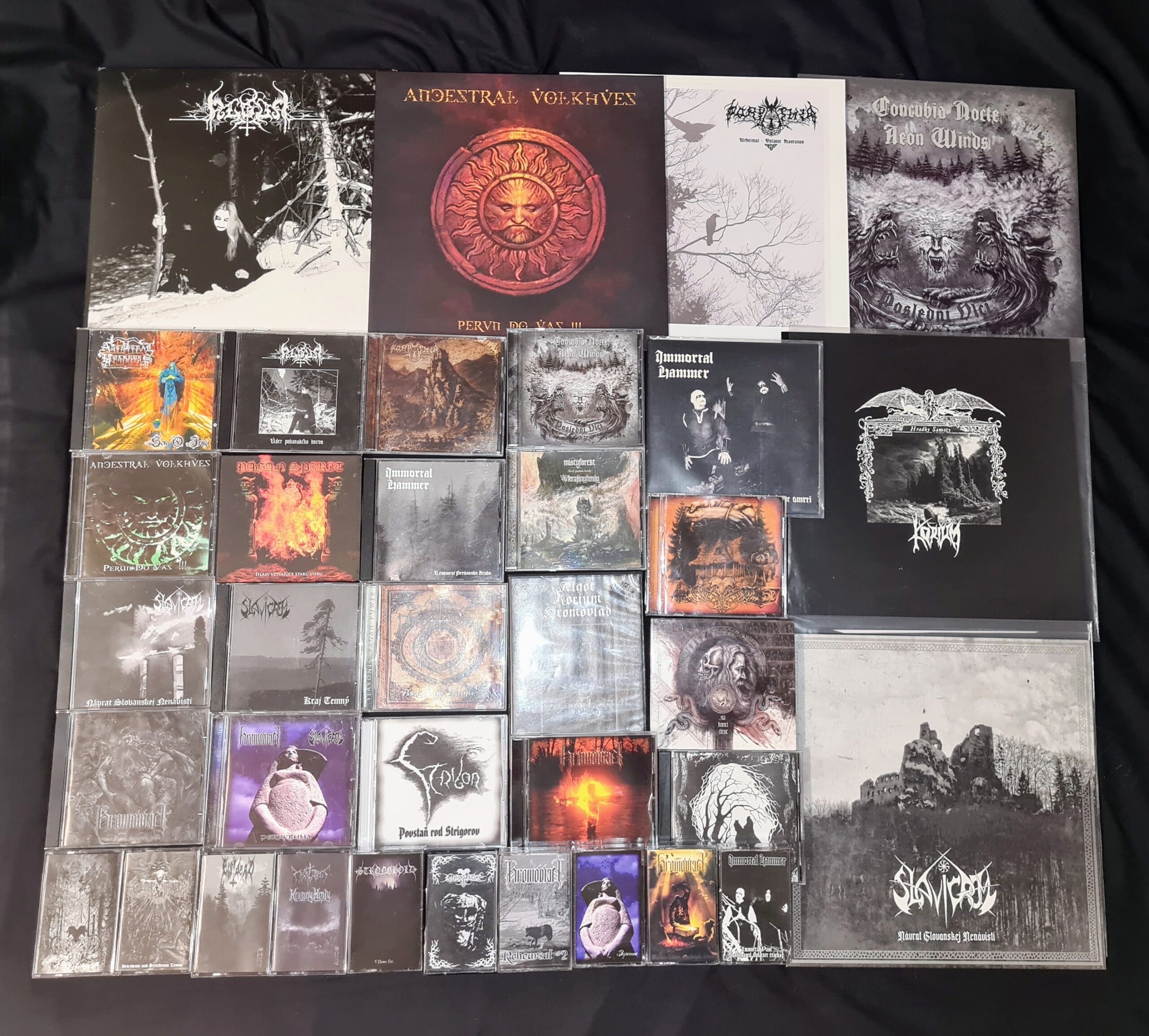
The era of pagan black metal is long gone and there is no sign of its grand return. However, the flame of the torch continues to burn. Legacies of ancient history, forgotten values and virtues, and lost deities: emotions and ideas resurrected in the flame of the underground, a legacy that transcends individuals and groups. This was pagan black metal in Slovakia.
***
Súvisiace články:
Historia slovenského black metalu
Začiatky slovenského black metalu
Pagan Black Metal na Slovensku časť I. – V znamení hromu
Pagan Black Metal na Slovensku časť II. – V znamení slnka
Pagan Black Metal na Slovensku časť III. – Oheň ešte tlie
DSBM na Slovensku
Korene zla v slovenskom undergrounde
Postmoderna v slovenskom black metale
Spomienka na tvorbu Samuela „Wolkogniva“ Čárskeho

